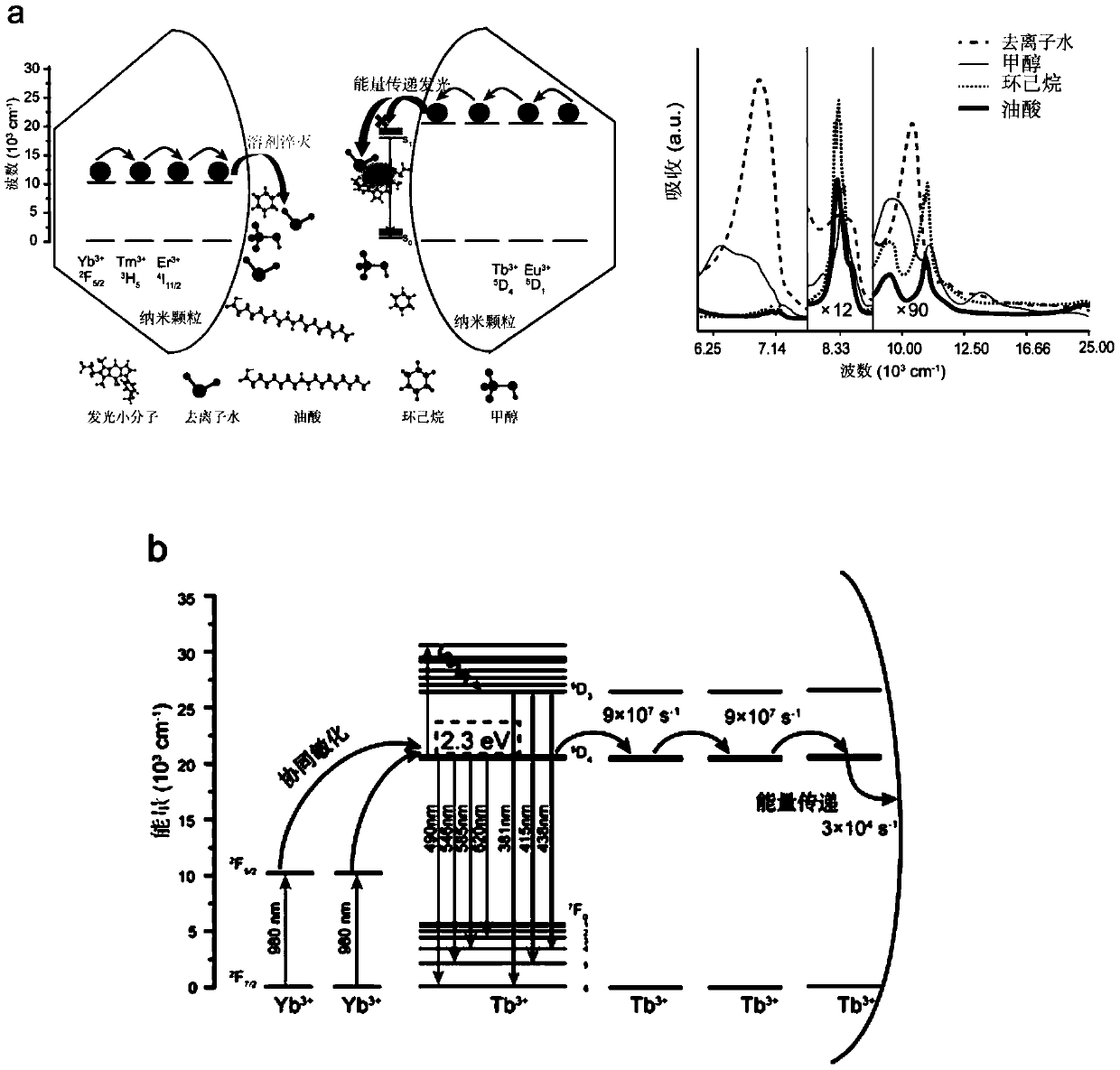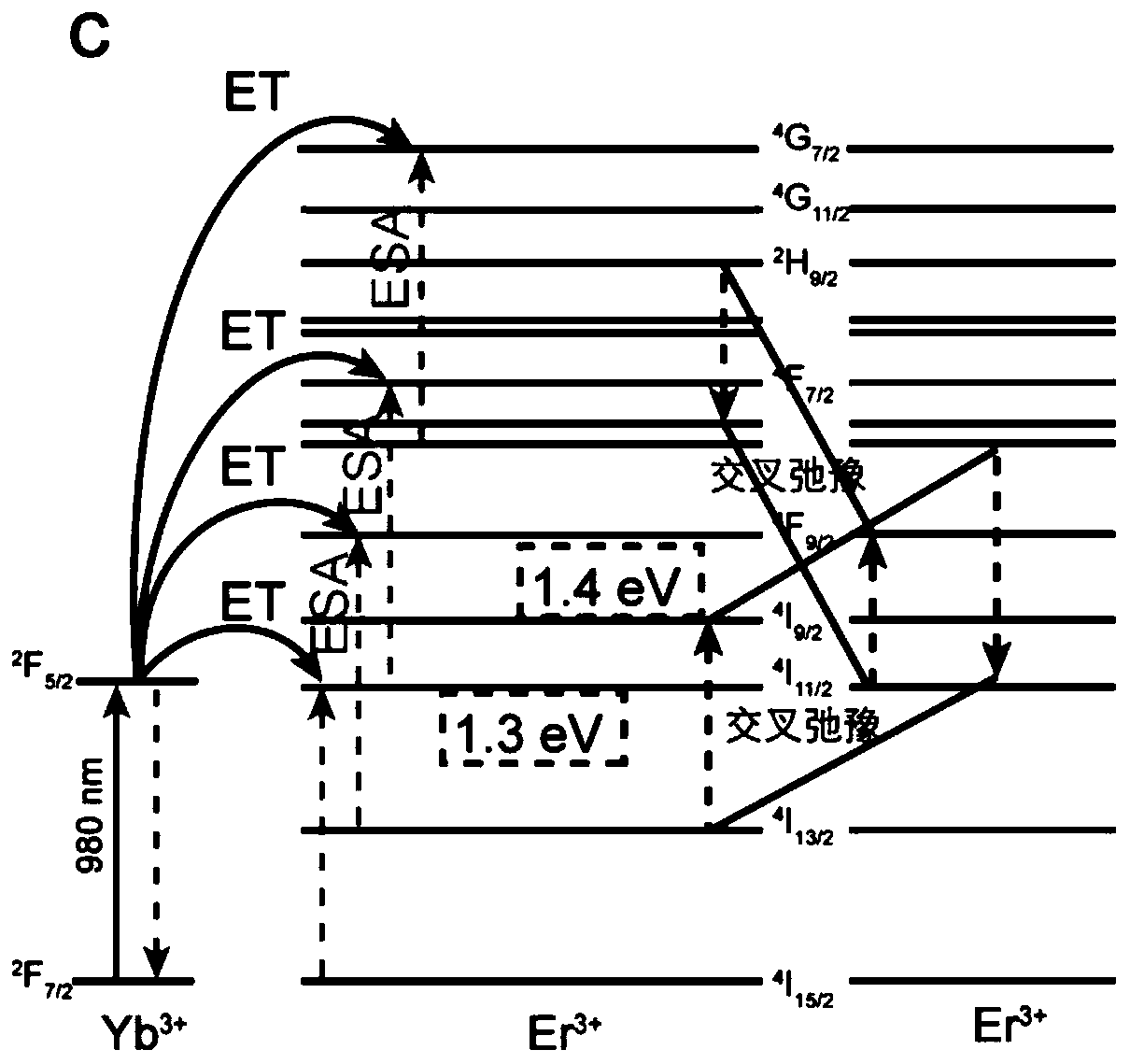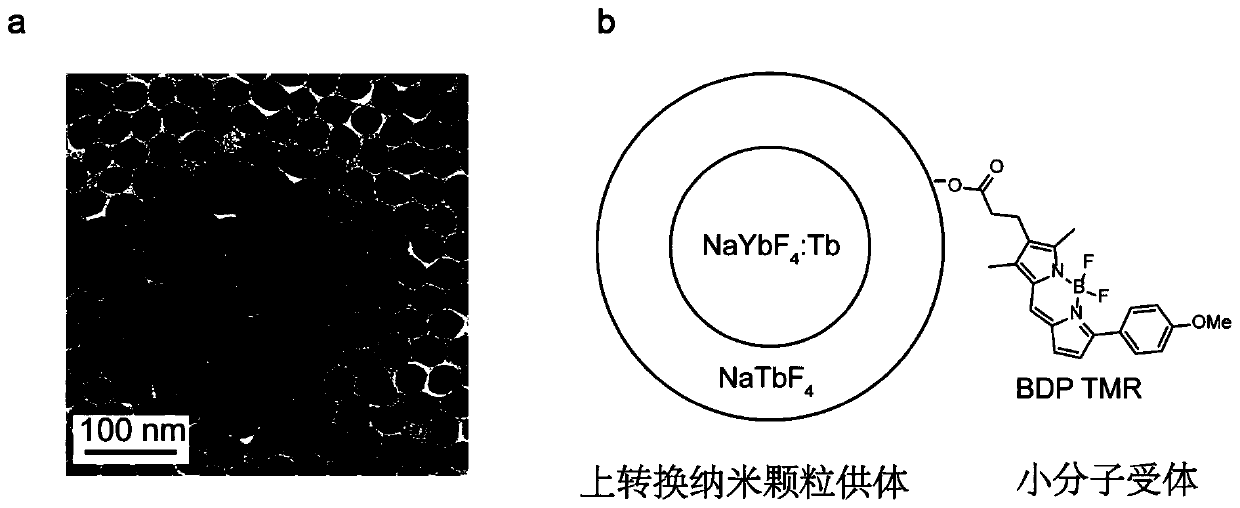Method for increasing energy transfer efficiency of rare earth ion-nano material
A technology of nanomaterials and rare earth ions, which is applied in luminescent materials, analytical materials, nanotechnology, etc., and can solve problems such as low energy transfer rate and energy loss
- Summary
- Abstract
- Description
- Claims
- Application Information
AI Technical Summary
Problems solved by technology
Method used
Image
Examples
Embodiment 1
[0077] Example 1: Construct a model of high-concentration doping of active ions to achieve effective energy transfer.
[0078] In this embodiment, through the efficient rare earth ion (Tb 3+ ) and common rare earth ions (Er 3+ ) energy level structure, and combined with the corresponding model for calculation and analysis, a model for high-concentration doping of active ions to achieve effective energy transfer was constructed, which proved that the use of high-efficiency rare earth ion doping can overcome energy cross relaxation The distance between the rare earth ions can be reduced by reducing the impurity concentration, which can accelerate the energy transfer through the excited state of the activated ions, and finally output the energy efficiently.
[0079] Such as figure 1 As shown in (a), first test the absorption spectrum of common solvents, such as methanol, ethanol, water, and cyclohexane. The absorption of solvents usually comes from the vibration of solvent func...
Embodiment 2
[0083] Example 2, in methanol solution, up-conversion nuclear nanoparticles NaY 0.35 Yb 0.6 f 4 :Tb 0.05 Preparation of BDP-loaded TMR materials and exploration of efficient energy transfer.
[0084] In a three-necked flask containing a magnetic stirrer, add 1.2mL Yb(CH 3 COO) 3 , 0.1mL Tb(CH 3 COO) 3 , 0.7mL Y(CH 3 COO) 3 Aqueous solution, 3mL oleic acid, 7mL octadecene, heated to 125 degrees Celsius in an oil bath to remove moisture in the reaction system; heated to 150 degrees Celsius, and kept for 1h; cooled to 50 degrees Celsius, moved the reaction system to a heating mantle, and Add 2mL of 0.5M methanolic NaOH solution and 4mL of 0.4M NH 4 F methanol solution, keep warm for 30min; then slowly heat up to 110 degrees Celsius to remove methanol and water; connect a vacuum pump, vacuum at 110 degrees Celsius to further remove water and air in the solution, continue for 10 minutes, fill with nitrogen, and then vacuum, repeat After three times, the temperature was ra...
Embodiment 3
[0087] Example 3: Up-conversion core-shell nanoparticles NaYb in methanol solution0.6 f 4 :Tb 0.4 @NaTbF 4 Preparation of BDP-loaded TMR materials and exploration of efficient energy transfer.
[0088] The precursor of shell-NaTbF was first synthesized 4 : Add 6.34mL oleic acid, 6.58mL oleylamine, 12.78mL octadecene and 10mL 0.2M Tb(CF 3 COO) 3 solution and 0.2720g of CF 3 COONa, the mixed solution oil bath was heated to 110 degrees centigrade to remove the moisture in the reaction system; the reaction system was moved to a heating mantle, heated to 120 degrees centigrade, and connected to a vacuum pump for evacuation for 45 minutes; turn off the vacuum pump and switch to nitrogen filling, Raise the temperature to 300 degrees Celsius, observe the reaction system, and continue to react for 5 minutes after it becomes turbid; stop heating, keep filling with nitrogen, and cool naturally to room temperature. Add ethanol to the reaction solution to precipitate the product, and...
PUM
 Login to View More
Login to View More Abstract
Description
Claims
Application Information
 Login to View More
Login to View More - R&D
- Intellectual Property
- Life Sciences
- Materials
- Tech Scout
- Unparalleled Data Quality
- Higher Quality Content
- 60% Fewer Hallucinations
Browse by: Latest US Patents, China's latest patents, Technical Efficacy Thesaurus, Application Domain, Technology Topic, Popular Technical Reports.
© 2025 PatSnap. All rights reserved.Legal|Privacy policy|Modern Slavery Act Transparency Statement|Sitemap|About US| Contact US: help@patsnap.com



